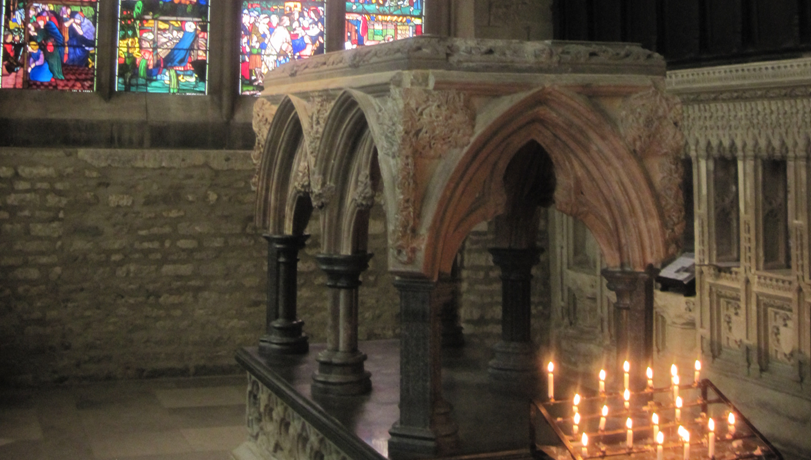 |
| Iona Abbey, founded by St. Columba in 565. |
Columba was born into a branch of one of the royal clans of Ireland in 521 and joined a monastery at an early age. It was a custom of Irish noblemen to send one of their children into the monastic life, which was of a higher status and importance in the Celtic Church than in the early 'Roman Church.' Although the various churches under the Roman Patriarch were for most of the middle ages only loosely connected to Rome, the Celtic Church, although sharing the same faith, had no ties with the Roman Church, and operated itself independently as all the Patriarchates did. Columba rose quickly to the rank of abbot, which in the Celtic Church was higher that the rank of bishop. While he remained in Ireland he founded the great monasteries of Durrow and Kells, both of which would produce illuminated gospel-books. In 565, after getting into a quarrel with other abbots and initiating a war between opposing royal clans he forced himself, as penance, to travel to the kingdom of Dal-Riata and convert all of the Scottish kingdoms. He was given the isle of
Iona where he built a monastery that would later become the center of Celtic Christianity. He traveled all over Scotland converting the rest of the land to Christianity and establishing the new church. When he came to the King Bruide of the Picts, or the 'Redshanks' as the Venerable Bede calls them, he was barred from the castle, but according to the detailed "Life of St. Columba" by Adomnan, a later abbot, the Gates them opened themselves upon Columba's command, letting his missionaries in, where King Bruide would convert to Christianity. Columba spent the rest of his life in Scotland where his actions were key to a firm foundation of Christianity among the Scots. He was such an important figure that several Anglo-Saxon histories include him in their accounts of ecclesiastical history.
The Scottish Episcopal Church, which was forced into hiding in the 17th and 18th centuries, is partially descended from Columba's Church.
St. Ninian converted the southern Picts and so the Scottish Episcopal Church is also descended Ninian's Church. Like all missionaries, Columba is important because he is a good example of the work that Christ asked us to do, and that became so revered in the office of bishop. The duty of the Church is to continue spreading the faith and love of Christ, and our modern Church must continue to spread the faith that St. Columba and others worked so hard to save and nurture. When Columba came to Scotland, he was amongst pagans; now we confront doubt and suspicion of the faith, but we must also work hard for the faith that so many dedicated their life to.
O God, who by the preaching of thy blessed servant Columba didst cause the light of the Gospel to shine in Scotland: Grant, we beseech thee, that, having his life and labors in remembrance, we may show forth the our thankfulness to thee by following the example of his zeal and patience; through Jesus Christ our Lord, who liveth and reigneth with thee and the Holy Spirit, one God, for ever and ever.
Amen.
Sources:
Lesser Feasts and Fasts (of the Episcopal Church).







